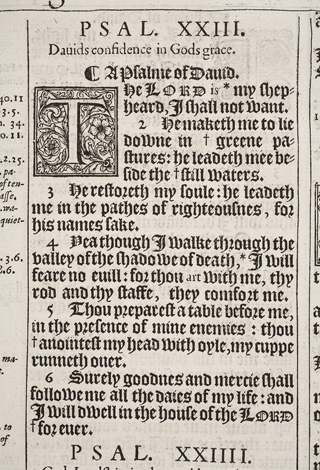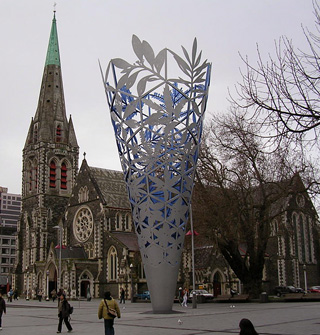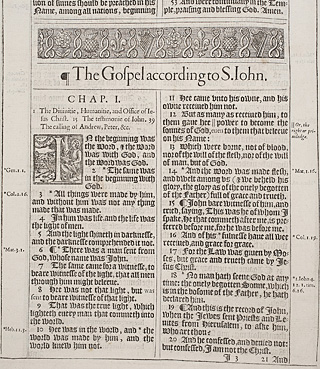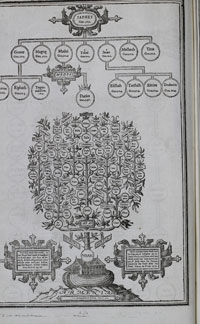1611
In 1982 the Dean and Chapter of Christchurch's Anglican Cathedral gave a copy of the KJB to the University of Canterbury along with a series of other books.
The 1611 Canterbury copy's original provenance remains unclear. Prior to entering into the cathedral's collection, it had once formed a part of the library of Christ's College, an educational institution established in Christchurch during the 19th century. While no written record remains, it is possible that the Bible was donated to the college by members of Christ Church College, Oxford.
The Canterbury 1611 KJB is missing a number of its pages. These include the engraved title page for the Old Testament and the Dedication to the Reader. Some of the last pages (including the Apocalypse) have been eaten by rats. Whether this occurred in Christchurch or while the volume was undertaking its perilous sea voyage is unclear.
The cover, although rather tattered, is original. It is made from boards covered with leather, with a stamped pattern on the leather still visible. The spine is still strongly bound in leather.
The interior of the Bible reveals several clues that indicate it was once in private ownership. The map of the Holy Land and the gazetteer have been removed. Futher, there are 41 pencil "X" marks added at various points in the text, suggesting the importance of certain passages to a private owner.




